Interview: Vintage Trouble guitarist Nalle Colt
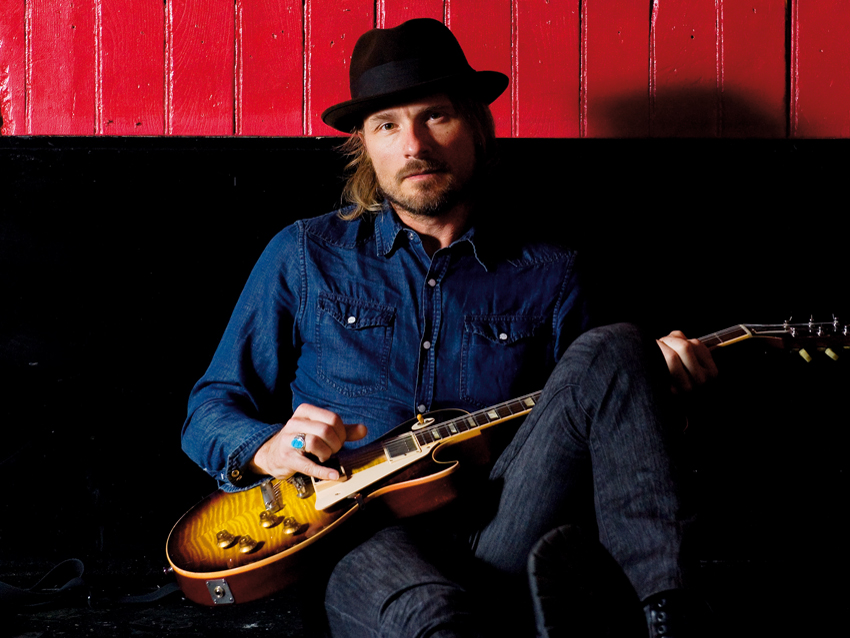
Nalle Colt, Vintage Trouble
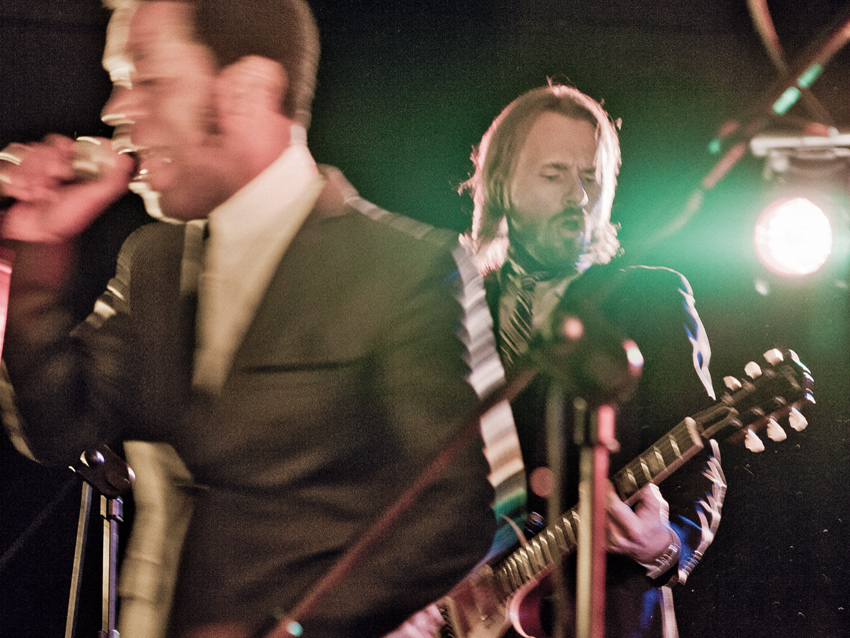
Vintage Trouble live
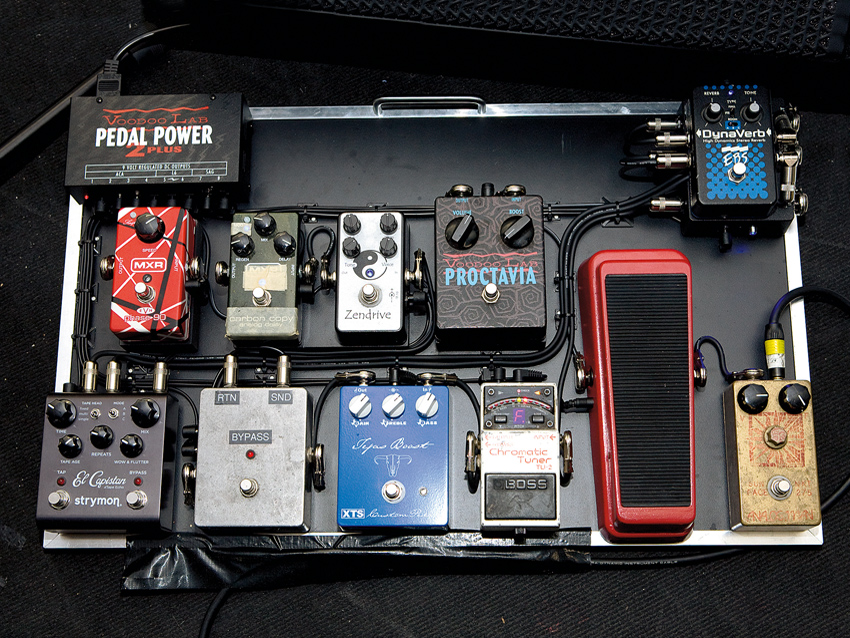
Nalle's pedalboard
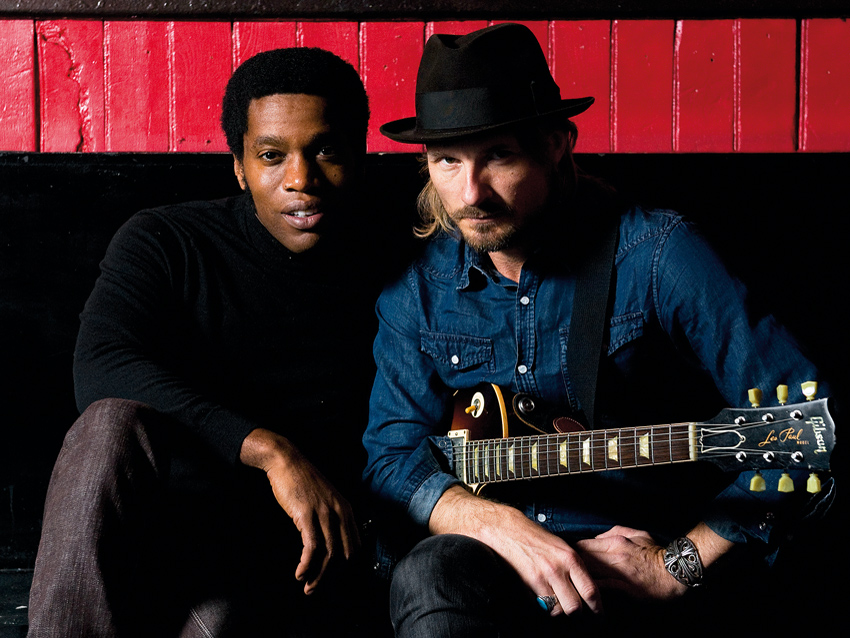
Ty Taylor and Nalle Colt
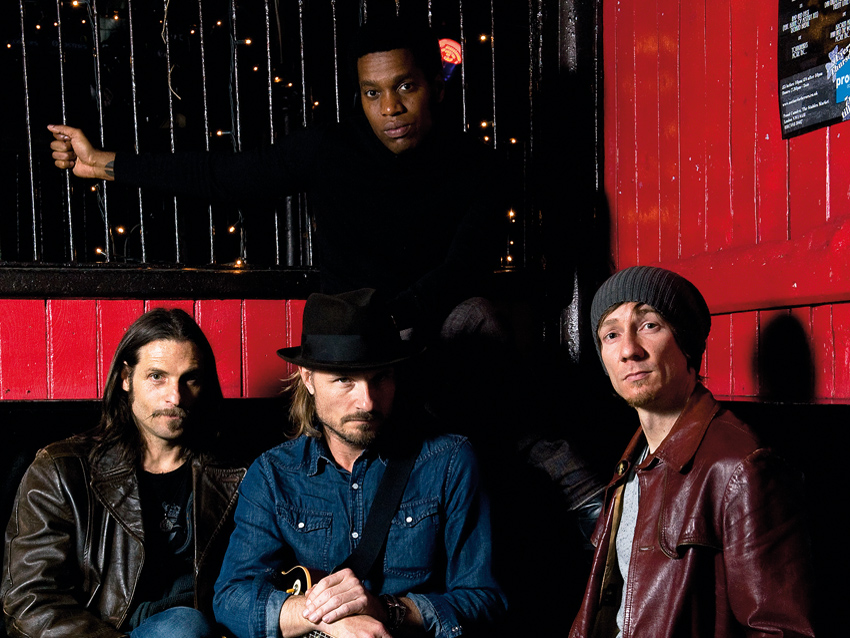
Vintage Trouble
Rock and soul troubadours Vintage Trouble are currently the hardest-working and most talked-about band in The City of Angels.
The quartet have just celebrated a year together by recording a follow-up album to The Bomb Shelter Sessions, their auspicious debut that was recorded live in just three days.
"We knew exactly what we wanted to do: a soul band with rough guitar, no horns, no keyboards - just kind of dirty and in your face."
The band's lone guitarist Nalle Colt and sensational lead singer Ty Taylor met in LA on their respective paths to fame and fortune - from Sweden and New Jersey via Las Vegas, respectively.
With sharp suits, sharper songs and many memorable performances, they've built a solid following of fans - the Troublemakers - playing gigs at juke-joints and late-night speakeasys.
Legendary manager Doc McGhee (Bon Jovi, KISS, Mötley Crüe et al) recently took VT under his wing and arranged showcases in London, plus a run of UK tour dates in May.
Nalle, tell us a bit more about how Vintage Trouble came together…
"I first met Ty about 11 years ago when he was playing with a boyband called Dakota Moon. I ended up joining them for a little while. He used to come and see my band and we got to be really good friends.
Want all the hottest music and gear news, reviews, deals, features and more, direct to your inbox? Sign up here.
"Ty became involved in a major US TV series called Rockstar: INXS [a reality TV show designed to find a new singer for Aussie band INXS] in 2005, and we always kept in touch and hoped we'd get a chance to put our own band together someday.
"Then he called me up about two years ago to join a band called Ghosthound. The band crashed, but we'd written a bunch of great songs and decided now was the time to put our own group together and do things our way.
"We knew exactly what we wanted to do: a soul band with rough guitar, no horns, no keyboards - just kind of dirty and in your face. Ty is one of the ultimate soul singers and he sounds great with a funky rock band behind him.
"We ran into Rick Barrio Dill, who is a classic R&B bass player, and Richard Danielson, who is just a powerhouse groove drummer - everything clicked.
"We all loved the original spirit of Otis Redding, Little Richard, Chuck Berry and more current guys such as The Black Keys and early Black Crowes.
"We wanted to recapture the excitement of when soul, R&B and rock music first connected - we want to be more of a soul band than a rock band and we keep the beats dancey and jumpy."
The Bomb Shelter Sessions came together very quickly, it seems…
"We'd only been together for three weeks! We went into a friend's studio and played everything live, including almost all of the vocals - it was so much fun.
"We wanted to get out and play residencies and we still play every Tuesday at Harvelle's, which is a beautiful old traditional blues club. VT play four different residencies a week now and we've played 148 shows in 11 months - just in LA!
"The band and our small crew have done all this entirely on our own, as well as developing a presence on the internet. We filmed our first video, Nancy Lee, using our iPhones and that attracted a lot of attention through YouTube, because it looks amazing. We pressed up the first album by ourselves as well."
Doc McGhee heard about you through one of your live shows, we understand?
"We were playing at a tiny restaurant that's really not set up for gigs. They have no PA and Ty was just singing through a guitar amp! A friend of Doc's saw us and called up the next day to arrange a meeting.
"He's managed and been involved with some amazing artists. He looked after James Brown when he was just 26 years old."
"I feel that people in the UK will really get it when they see us live. We're here to test the waters and couldn't be more excited."
How did you first get into playing guitar?
"Growing up in Malmo, Sweden, it wasn't that easy to hear international artists; I didn't even know what they were saying, but I just loved the sound. Then I got hold of a rare album of Jimi Hendrix jamming with Curtis Knight and I was hooked.
"So I traded in a skateboard for a crappy Harmony guitar with impossibly high action that I couldn't even tune. Then I got a cheap amp with a 12-inch speaker and managed to get this incredible feedback out of it.
"I put the amp out on the little balcony of our apartment, which overlooked the schoolyard, and let it scream! I was just 11 years old and didn't yet know how to play guitar, but it sounded super cool. I spent the next five months trying to get the guitar in tune!
"My folks saw that I was serious and one day my grandad took me to a store and bought me a white Delta-brand Strat-type guitar with a big headstock, like Jimi's '69 Fender.
"My grandmother was an amazing concert pianist, but I was too lazy to learn. Guitar offered me more freedom. I played along with Rory Gallagher records and got better and better.
"Skateboarding had always been a big part of my life, and I was a professional. That actually got me deeper into playing guitar, as I ended up spending a lot of time sitting around while my injuries healed!
"I always wanted to go out to Venice Beach, California, which is one of the homes of skateboarding and is where I now live. I was 21 when I moved out to LA to try my luck at music and straight away I started playing in bands.
"Music is everywhere in LA and it felt like I could grow there. I got some session work and even played with Engelbert Humperdinck, on tour and on his last album!"
We see you use a cool fuzz effect in your guitar tone…
"I work hard to mix the sound of my Analog Man fuzz with my favourite Les Paul and Fender Tweed amps to get a warm, gritty tone on stage. We were recording demos and I had the fuzz pedal in my closet. I was kind of scared of it, but I tried it with a cheap little Fender Blues Junior amp.
"The Analog Man is kind of a clone of an old Fuzz Face from the 1960s like the ones Hendrix used and is brighter than most of the similar pedals I've tried.
"I set the pedal on full fuzz, which actually adds a lot of volume, as the amps themselves aren't very loud. I tried the same fuzz with some of my boutique-style amps and it sounds absolutely horrible! It only works well for me with the Blues Junior or small Tweed Fender amps.
"The Blues Junior has two EL84 power tubes, with a 15-watt output, and I swap out the speaker for a 12-inch Celestion Vintage 30. I love these amps because I pick them up for around $350 and can keep 'em in the trunk of my car!
"I also use an EBS pedal, which is made in Sweden. It gives me a really obnoxious, Buddy Guy, way-too-much reverb effect.
"The guitar volume stays on about five or six for all the rhythm stuff and when I really want to hit you in the face, I'll turn it all the way up.
"I keep the fuzz pedal on the entire time even for clean parts. I just back off the guitar volume and it works just great. The treble stays right there and the chords stay bright and don't get murky."
The second album is in the pipeline - what guitars and amps did you use?
"We spent a little longer getting sounds right this time, but most of the recording was still done over two days. I used my old Fender Vibratone again, which is a Leslie- style rotating speaker cabinet, like the one Stevie Ray Vaughan used on Cold Shot. I would love to use it live, but it's kind of a clumsy thing.
"I used an old Sovtek amp with it in the studio; the Leslie is so much better than a chorus or a flange pedal because you really need to move the sound around to get that effect.
"My main guitar is a 2005 VOS Gibson Les Paul. I was checking out some Jimmy Page stuff and I bought theGibson from a friend of mine who works in a store. It's a soft tobacco sunburst and I sanded the lacquer off the neck completely. It's a '59 reissue but the neck is really beefy, chunkier than any other '59 I've played.
"I also have a butterscotch Telecaster, which I love. I put a humbucker on it to give me that Keith Richards thing, but it never really works with this band.
"The Les Paul has a hand-made custom pickup wound for me by a friend of mine from Japan. It really fits perfectly - I haven't seen my Tele for about a year now!
"I use Black Diamond strings made in Sarasota, Florida and they've honestly made a big difference to my playing. They're nickel 0.010 to 0.046 gauge and sound wonderful."
Do you think the UK will be into the soul vibe of the band?
"Everyone in Vintage Trouble loves the UK and I feel that people over here will really get it when they see us live. The band got an incredible reaction when we played The Gibson Showroom in London the other night. We're here to test the waters and couldn't be more excited."

